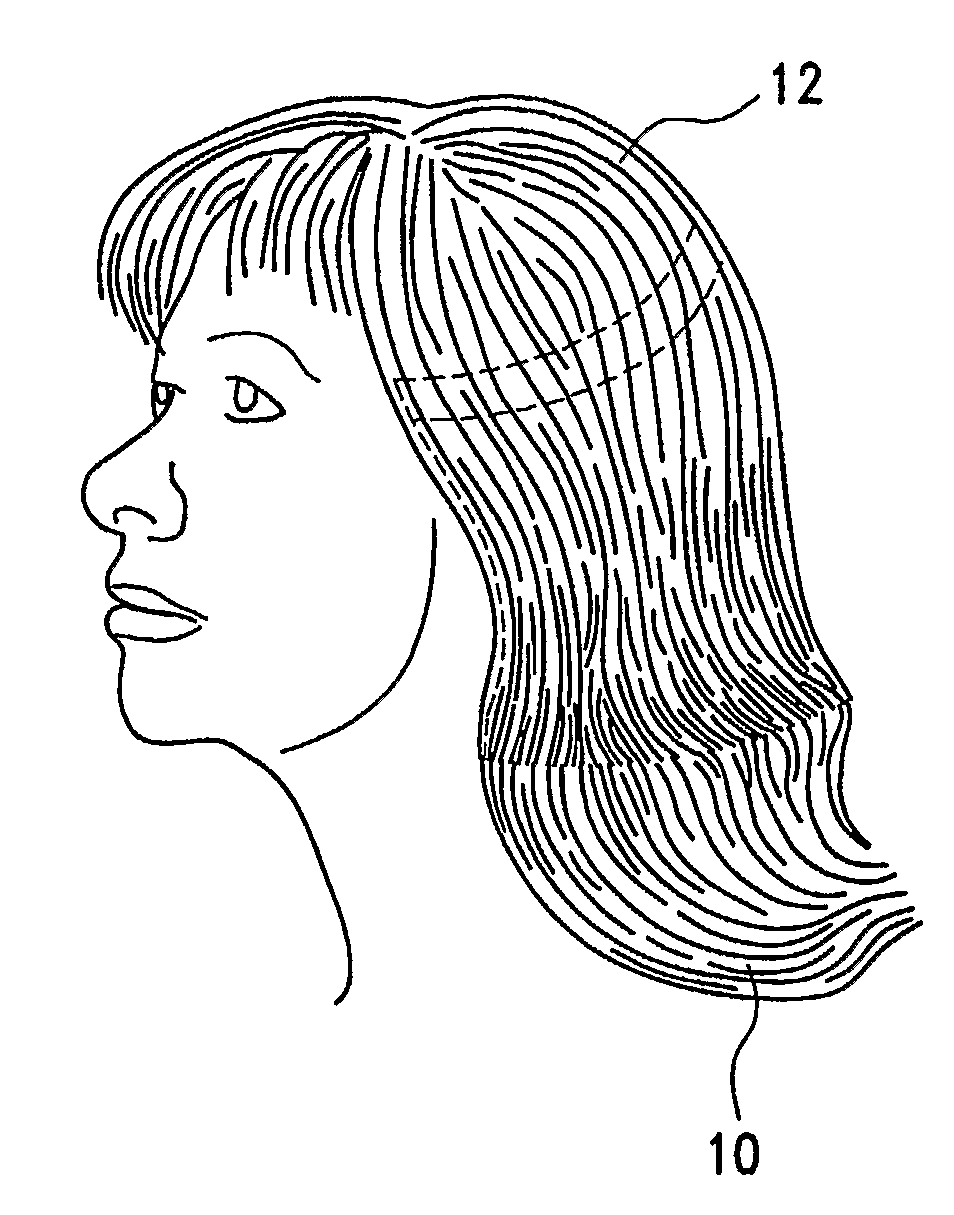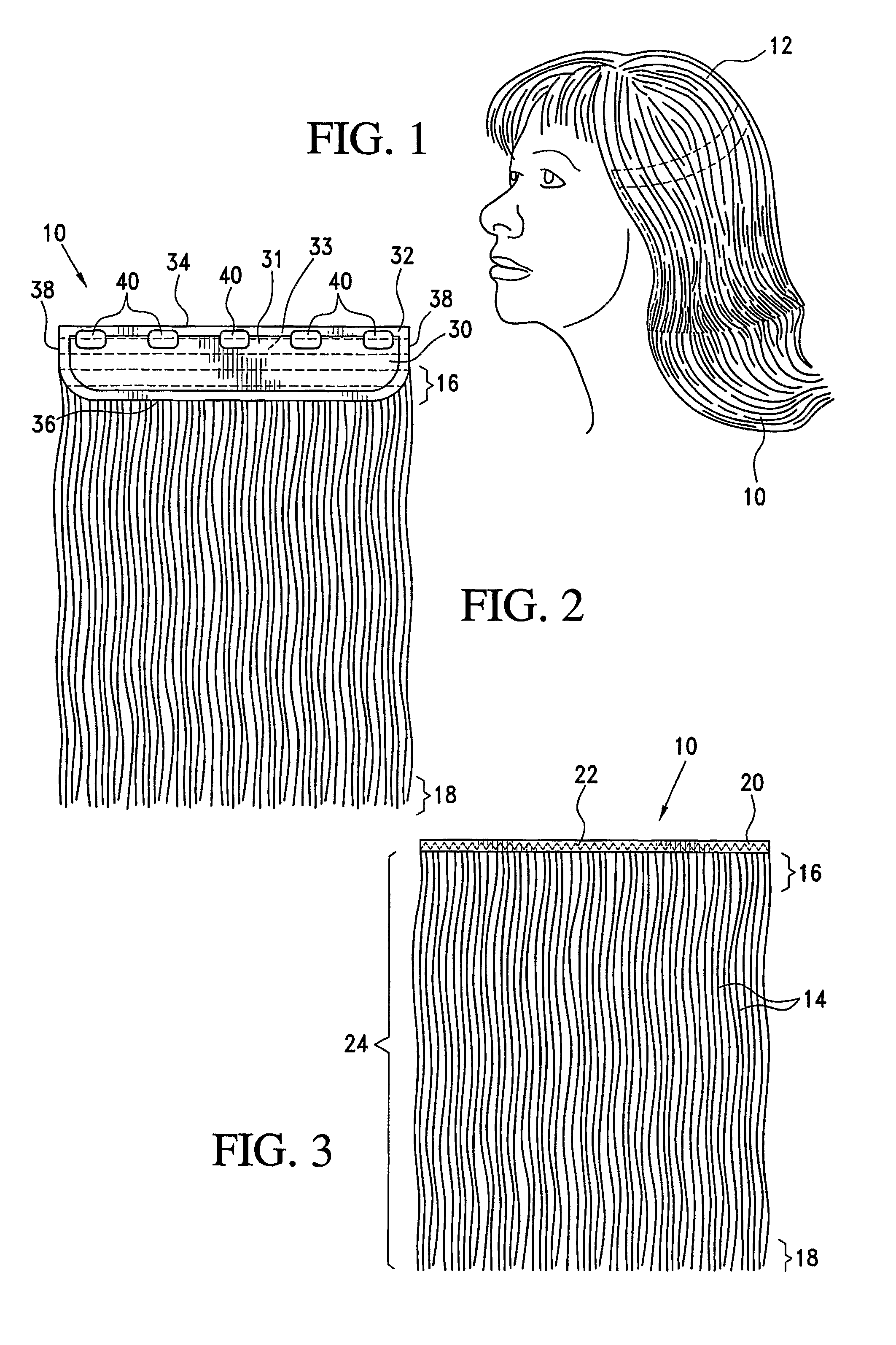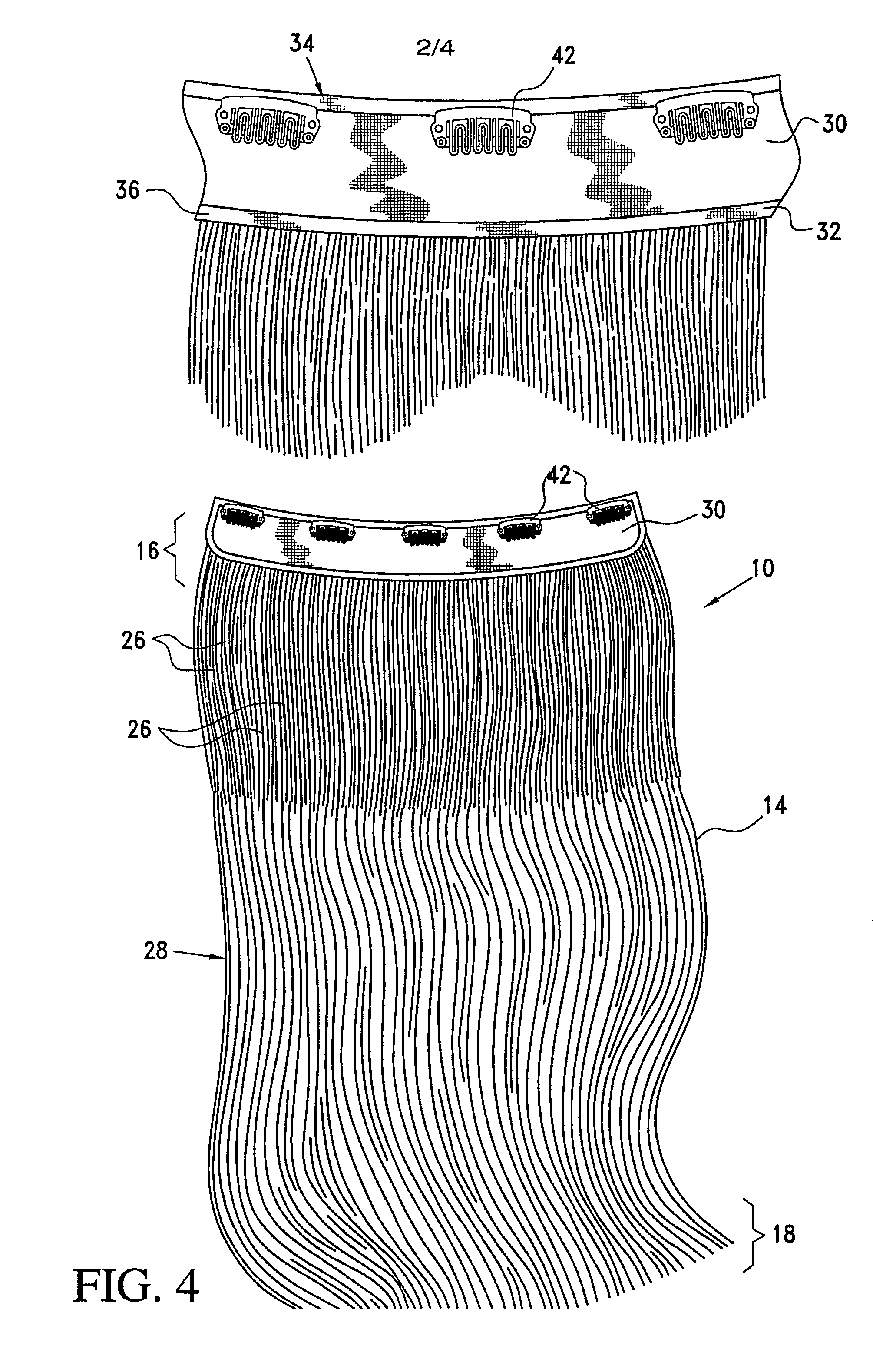Removable and Resuable Hair Extension
a hair extension and resuable technology, applied in the field of hair extensions, can solve the problems of damage to wearer's natural hair, wearer's own natural hair becoming unattractive and easily breakable, and the process of removing extensions from time to time in order damage, etc., to enhance a wearer's natural hair, remove quickly and easily, and place and secure on the wearer's head.
- Summary
- Abstract
- Description
- Claims
- Application Information
AI Technical Summary
Benefits of technology
Problems solved by technology
Method used
Image
Examples
Embodiment Construction
[0047]The term “artificial hair” is used herein to describe any hair used in the device of the invention, other than the wearer's hair which grows from the wearer's scalp. The term “natural hair” as used herein denotes the wearer's hair that grows from the wearer's head, without regard to whether or not that hair has been chemically, mechanically and / or thermally treated. The artificial hair used in the device of this invention may be synthetic fibers, or may be human or animal hair in its natural state, e.g. not chemically processed with bleaching, coloring, waving, straightening or other agents. Alternatively, the artificial hair may have been treated to change its color and / or texture (wavy, straight) prior to attaching it to the hair extension device. Due to the high cost of human hair, and the increasing quality of synthetic hair, as well as the much lower cost for synthetic hair, the use of synthetic hair is preferred.
[0048]The extensions of the present invention are less cost...
PUM
 Login to View More
Login to View More Abstract
Description
Claims
Application Information
 Login to View More
Login to View More - R&D
- Intellectual Property
- Life Sciences
- Materials
- Tech Scout
- Unparalleled Data Quality
- Higher Quality Content
- 60% Fewer Hallucinations
Browse by: Latest US Patents, China's latest patents, Technical Efficacy Thesaurus, Application Domain, Technology Topic, Popular Technical Reports.
© 2025 PatSnap. All rights reserved.Legal|Privacy policy|Modern Slavery Act Transparency Statement|Sitemap|About US| Contact US: help@patsnap.com



